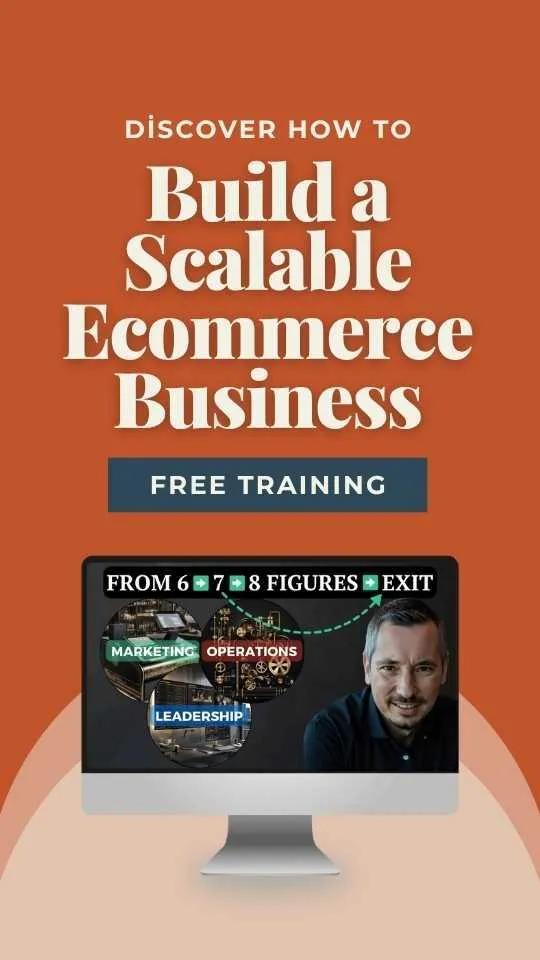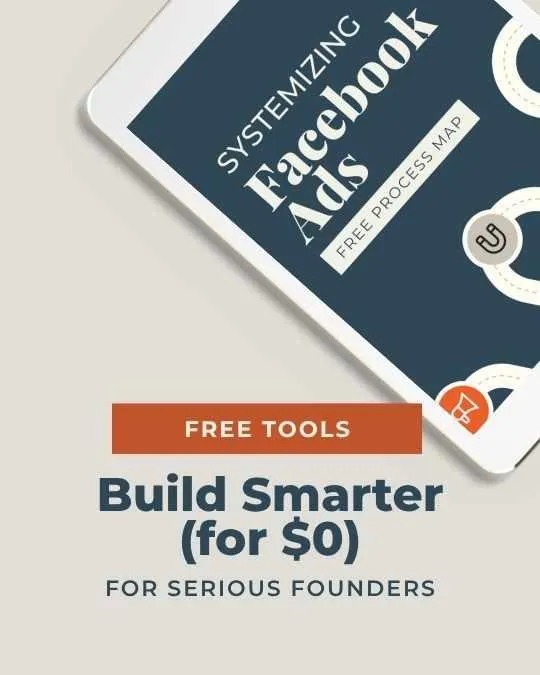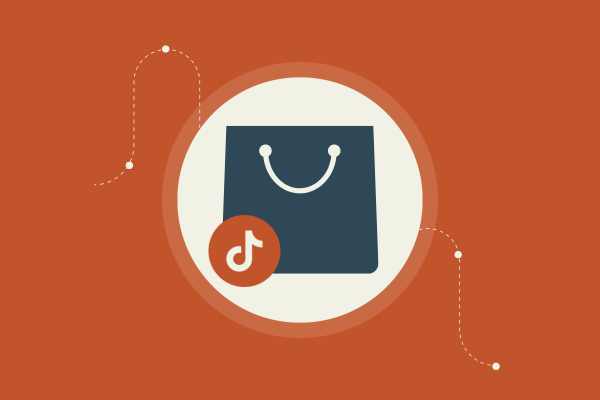Understanding the True Cost of Goods Sold: Crack the Code for eCommerce Success
Understanding the true cost of goods sold (COGS) is like unlocking the secret behind your eCommerce success. It’s not just about numbers; it's about knowing the exact cost to make or buy your products. When you truly grasp COGS, your business gains clarity and your profit margins make sense.
You, the eCommerce entrepreneur, need to know how COGS impacts your pricing and profits. A clear view lets you adjust prices smartly and boost those bottom-line figures. So, why let guesswork rule your financials when there's a formula waiting to be mastered?
Imagine having the power to decide when to lower costs or pump up stock levels. Informed decisions aren't just fancy—they’re essential.
Let’s explore COGS to drive your business forward with confidence.
Key Takeaways
COGS is crucial for setting competitive prices.
Smart inventory management helps control COGS.
Calculating COGS improves profit margins.
Breaking Down COGS
Cost of Goods Sold (COGS) is crucial for understanding how much it costs to make or buy the products you sell. Differentiating COGS from operating expenses helps you see where your money is going and how it affects your profits.
Defining Cost of Goods Sold (COGS)
COGS is all about the direct costs that go into your products before they reach your customers. Think of raw materials and labor costs here.
If you buy inventory from a third party, costs tied to getting that inventory are your COGS. This includes what you paid for the items and any shipping costs involved. For businesses making their own products, it also covers the costs of raw materials and labor that directly contribute to creating those goods.
Keep in mind that COGS doesn’t include costs incurred after the sale, like delivery fees or sales costs. Understanding this helps you figure out your gross profit by subtracting COGS from sales revenue. By lowering COGS, your profit margins can improve, giving you more room to grow and invest back into your business.
COGS vs. Operating Expenses
Here's the deal: COGS and operating expenses aren't the same things. COGS refers to the direct costs of making or buying what you sell. Operating expenses are all the other costs that keep your business running, like rent and marketing.
Operating expenses don’t change with production levels, while COGS does. If you sell more, your COGS goes up because you need more materials and labor. Operating expenses, like office rent or salaries for support staff, stay fixed whether you sell one unit or a thousand.
By dividing these costs, you get a clearer picture of where your money's going. This can help you make smarter choices about pricing and budgeting.
Want to dive deeper? Check out the detailed guide on COGS calculation or find out more about their impact on profitability through eCommerce accounting.
Inventory Impact on COGS
Understanding how inventory affects your Cost of Goods Sold (COGS) is crucial for eCommerce success. Mastering the balance of inventory, from its beginning and ending amounts to different management techniques, can drive profitability. Let's dive into these key elements.
Beginning and Ending Inventory
Beginning inventory is what you start with. It's like your snack stash before a party. Ending inventory, on the other hand, is what's left after the festivities—your leftovers.
In business terms, these numbers play a big role in calculating COGS. Say you start with $10,000 in inventory and end with $6,000. If you buy $9,000 worth of new products, your COGS is $13,000. This formula helps you see the cash flow and assess your sales efficiency.
Understanding these changes helps you manage costs and predict future needs. Too much inventory ties up cash; too little, and you miss sales. Find your sweet spot!
Inventory Management Techniques
How you manage inventory shapes your business. Streamlining inventory with techniques like FIFO, LIFO, or the average cost method makes a difference.
FIFO, or first-in, first-out, means selling the oldest stock first. It works great for perishable items.
LIFO, meaning last-in, first-out, flips the script. You sell fresh stock first under LIFO. The choice depends on cost fluctuation and tax strategies.
Don't overlook the specific identification method, where each item is tracked individually. It’s perfect for unique or high-ticket items.
Choosing the best method can help you save money and smoothen operations.
Fighting the Inventory Battle
Inventory management is like wrestling with a greased pig—tricky and unexpected. It demands tactics and tenacity.
Predicting demand helps. Keeping track of stock levels is vital too. Use smart software tools for accuracy in this battle.
Quick adjustments and clear strategies avoid overstocking or stockouts. Don't let inventory bloat strangle your cash flow. A healthy inventory keeps your business agile and ready to triumph in the eCommerce arena.
Remember, the key is balance. Keeping just enough inventory means you’re always ready to meet demand without drowning in excess. It's a business-saving art form that should never be ignored!
Calculating COGS
Knowing how to calculate the Cost of Goods Sold (COGS) is key for eCommerce success. You'll need to get the formula right, factor in different costs, and pick the right accounting method. Let's break it down.
The Basic Formula
To calculate COGS, start with a simple formula:
[ \text{COGS} = \text{Starting Inventory} + \text{Purchases} - \text{Ending Inventory} ]
This formula shows you how much it costs to sell all the goods in a period. Starting inventory is what you have at the beginning. Purchases are the new stock you get. Ending inventory is what's left at the end.
Why does it matter? Because it's the first step to know how much you spent to make your profits. Using this basic formula helps you keep track of what comes in and goes out.
Accounting for Direct and Indirect Costs
Direct expenses are straightforward. Think raw materials and labor costs. These tie directly to the product.
But wait, you've got indirect costs too. These are the overhead costs, like rent or utilities, that aren't linked directly to specific items.
You need to understand both. Direct expenses hit your pocket right away. Indirect costs might sneak up on you. Including both helps you capture the true cost of making and selling your products.
Knowing the difference is gold. It gives you a clearer picture of where your money goes, which means smarter pricing and better margins.
Choosing the Right Accounting Method
Here's where it gets interesting. You get to choose how you calculate. The three main methods are WAC (weighted average cost), specific identification, and accrual accounting.
WAC: This method averages out your costs. Everything is blended together. It's simple and works well if prices are stable.
Specific Identification: Use this when you can track individual costs to each item. Best for unique or high-value items.
Accrual Accounting: Recognize expenses when they are incurred, not when paid. It matches costs with revenues better.
Choosing the right method impacts your bottom line. Your business type and how detailed you want to get will guide you in picking the best fit.
Profit Margins and Pricing
Mastering profit margins and pricing is crucial for your eCommerce business. You need to balance making a profit while attracting customers with competitive prices. This section covers how to achieve sensible margins, create winning pricing strategies, and handle price changes effectively.
Margins That Make Sense
First things first, know your numbers.
Gross profit is the money left after subtracting the cost of goods sold from your sales revenue. Your goal? Maximize it.
Focus on a strong gross profit margin. This means your business is keeping a healthy portion of revenue as profit. Aim for margins that cover costs and leave room for growth. Use pricing data to fine-tune where you can charge more without losing customers.
Consider using a table to track product costs, selling prices, and associated margins. Keep an eye on changes in costs or demand. This helps ensure margins remain appealing and sustainable over time.
Pricing Strategies That Win
Good pricing isn’t just about numbers. It's about value. A winning pricing strategy reflects what your customers see as worth their money.
Competitive pricing can pull you ahead of the pack. Analyze competitors, know where you stand, and adjust as needed. Pricing products below or just at market rate can entice cost-conscious buyers. But remember, it has to cover costs.
Explore dynamic pricing. This adjusts prices based on demand or inventory levels. It's tricky but can lead to increased sales. Keep experimenting until you hit the sweet spot—where value meets profitability.
Handling Price Changes and Sales
Changing prices? Scary but necessary. Sometimes costs rise, or demand drops, and price changes become a must. Handle it like a pro.
Communicate with customers about why changes happen. Be clear. Keep trust intact.
Use sales to boost business. It’s about timing and audience. When done right, sales not only clear old stock but also spark new interest.
Try bundling products or offering discounts. Make sure sales don't eat into profits too much. Balancing short-term sales boosts with long-term margin health is key. Always focus on the bottom line—because at the end of the day, it’s about making sure your business prospers.
Key Strategies to Lower COGS
Reducing the Cost of Goods Sold (COGS) boosts your profit margins. Focus on making operations lean, negotiating better deals, and using tech to automate tasks.
Lean Manufacturing and Efficiency
Keep your operation smooth and tight. Cut out waste to save on materials and labor. Focus on efficiency at every step. Streamline your production line. Fewer mistakes mean fewer costs.
Use lean manufacturing techniques. They help minimize waste and max out productivity. Focus on producing only what's needed. This way, you won't have tons of unsold inventory sitting around.
Train your team to work smarter, not harder. Educate them about cost efficiency and using resources wisely. This reduces labor expenses and ups your earnings.
Supplier Negotiations and Bulk Buying
Your suppliers are your partners in success. Negotiate better rates through trust and long-term commitments. Let them know you're here for the long haul and not just for today’s deal.
Use bulk purchases for cost-saving opportunities. Buy more, pay less. It works wonders for reducing your COGS. Establish agreements that benefit both sides.
Keep a keen eye on your inventory. Avoid over-buying and under-buying. Anticipate needs, and make sure what you buy moves fast. Stay stocked but never overloaded.
Technology and Automation
Use tech to cut costs and boost productivity. Automation is like having a team that never sleeps. It handles repetitive tasks and reduces human error, saving time and cash.
Invest in smart inventory management systems. They track stock levels and help you make better decisions. You'll never miss a sale or overstock a product again.
Update your production line with the latest tech tools. Even simple tech upgrades can mean big savings. Think about software that monitors and improves processes. It's all about doing more with less.
COGS and Business Decisions
COGS isn’t just a number on a balance sheet—it's a key player in your business strategy. By understanding how it impacts your financial planning, investments, and operations, you can make smarter decisions that fuel growth.
Short-term and Long-term Financial Planning
Let's dive into planning. Short-term decisions are the here and now. COGS tells you what’s eating up your cash right now. Like, today.
Thinking long-term, COGS gives clues about your future. It helps you forecast demand, predict trends, and budget. You want to know if costs are rising or falling.
Why? Because getting this right lets you map out a path for growth. It's all about seeing the road ahead clearly. Adjust these numbers, and you’re not just surviving—you’re thriving.
Investment in Growth
COGS is your North Star when deciding where to put your money. Want to invest in new inventory or tech? Check your COGS first.
If your COGS is under control, it might be time to scale up. Invest in better systems, more marketing, or new product lines.
Drive down COGS, and you free up cash. More cash means more options. It could lead to new opportunities and bigger profits. That’s real power, right there.
Operational Adaptability
Here's the deal with operations: flexibility rules. The lower your COGS, the more agile you are.
Need to adapt to market changes? COGS helps you tweak your operations without sweating bullets.
Efficient operations can absorb shocks. If you streamline processes by cutting unnecessary costs, you win.
Use COGS to stay on your toes. Be ready when changes come knocking. Whether it's a shift in demand or a new competitor, you can pivot with confidence.
Financial Reporting and COGS
When it comes to financial reporting, the Cost of Goods Sold (COGS) is a big deal. It can shape how profitable your business looks on paper. Let’s dive into how COGS plays its part in different financial statements.
Profit and Loss Statements
Your Profit and Loss Statement (P&L) includes COGS. This statement tells you how much money you made, minus your COGS. It's basically your sales minus the cost to make those sales happen.
Here's the game-changer: lower your COGS and you boost your gross profit. So, keeping an eye on your COGS can be the secret sauce to understanding your business profitability.
Don't forget other expenses like operating and marketing costs. They also show up on the P&L and affect your net income. Pay attention, or you might miss out on spotting wasteful spending areas.
Income Statement Insights
Think of the income statement as your business’s report card. It shows your revenues, expenses, and tells you how well your business is doing over time. COGS is a major line item there.
It’s more than just numbers. COGS seriously impacts your net profit. Revenue minus COGS gives you the gross profit, which then gets sliced by other expenses to show net profit.
For eCommerce entrepreneurs, analyzing COGS here gives insights into managing costs. You can tweak processes to get more from the same sales, improving margins without increasing sales volume.
The Bottom Line
What the income statement gives you, the bottom line stands clear as your net income. This is what’s left after you subtract all expenses from total revenue.
COGS plays a huge role here too. Your net profit improves when you manage COGS well. It's smart to include regular reviews of COGS for strategic decisions. This could be adjusting supplier contracts or negotiating better deals.
Keeping COGS in check makes your business healthier, giving you more freedom to invest back or take home more profit. Don't just watch it—control it!
Understanding Additional Costs
Running an eCommerce business involves a lot more than just the cost of producing or purchasing goods. You also have to factor in shipping, handling returns, and packaging. These additional costs can significantly impact your bottom line.
Shipping, Freight, and Tariffs
Shipping isn't just about putting items in a box and handing them over. It involves costs like freight and tariffs. Freight costs vary based on size, weight, and distance. Tariffs can bite into your profits especially if you import goods. To stay competitive, you might offer free shipping—make sure your pricing covers this.
Being proactive helps. Negotiate rates with carriers. Offering shipping options can help manage customer expectations and keep your costs in check.
Returns and Customer Expectations
Customers expect returns to be easy. And they cost money. You pay for the return shipping and often need to restock or even replace a product. To keep returns low, ensure product quality and clear descriptions.
Communicating expectations keeps customers happy. Handle returns quickly and politely. Offering great service can turn returns into future sales. An effective return policy builds trust and keeps your reputation strong.
Packaging: The Hidden Cost
Packaging is more than a box and tape. It includes all packaging materials you use. Custom or branded packaging adds appeal but raises costs. Functionality is essential—goods must arrive undamaged.
Choose packaging wisely. Bulk buying can save on costs. Weigh the benefits of eye-catching designs against your budget. Consider eco-friendly options; they may appeal to consumers and benefit the environment.
Analyzing these extra costs can boost your profitability. It ensures your eCommerce venture stays on the right track. Remember, every penny saved on these aspects is a penny earned.







